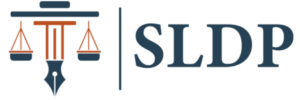HRDD is a proactive process to identify, prevent, mitigate, and address potential human rights risks that may arise during project design and implementation. The process should include assessing the actual and potential adverse human rights impacts of humanitarian activities, acting upon the findings, tracking responses, and communicating how impacts are addressed.7 In this way, HRDD acts as a safeguard to ensure that humanitarian efforts align with international human rights standards, fostering an approach that is accountable, transparent, and rights-centred.
In conflict-affected settings, such as Northwest Syria, humanitarian NGOs should undertake a heightened version of HRDD (i.e. Heightened HRDD) to better understand the impacts of their activities on conflict dynamics. Heightened HRDD strengthens the understanding of the context where humanitarian NGOs operate and ensures that their activities do not contribute to violence, reinforce existing inequalities, or create new vulnerabilities. This can be achieved by identifying flash points, potential triggers, or the drivers of the conflict.8
In essence, heightened HRDD entails a rigorous approach to identifying both potential and actual impacts on individuals’ human rights and on the broader conflict context. This approach is grounded in the principle of proportionality: as the risk level increases, the complexity and depth of due diligence processes must correspondingly intensify. Therefore, due diligence measures should be elevated in conflict-affected areas, where the risk of severe human rights abuses is significantly heightened. This ensures that all actions are proportionate to the specific challenges and risks of these environments, aiming to prevent, mitigate, and address adverse impacts effectively.
HRDD is not a one and done process, nor is it a checklist activity. It is an ongoing process9 that requires constant vigilance, particularly in a region experiencing volatility and instability. In these settings, human rights risks may evolve with time,10 and prevention and mitigation measures will have to be adjusted accordingly. It is also important to note that HRDD will vary in complexity with the size of the organization and the nature and context of its operations11.
7. The United Nations Guiding Principles on Business and Human Rights: Implementing the “Protect, Respect, and Remedy Framework (hereinafter ‘UNGPs’) (2011) HR/PUB/11/04, Principle 17, available at <https://www.ohchr.org/sites/default/files/documents/publications/guidingprinciplesbusinesshr_en.pdf>
8. UNDP, ‘Heightened Human Rights Due Diligence for Business in Conflict-Affected Contexts: A Guide’ (2022) available at <https://www.undp.org/publications/heightened-human-rights-due-diligence-business-conflict-affected-contexts-guide>
9. UNGPs (n 6) Principle 17(c).
10. Ibid.
11. UNGPs (n 6) Principle 17(b).




